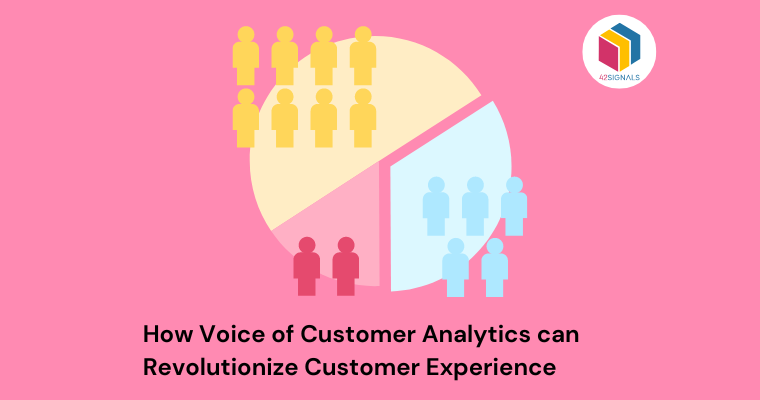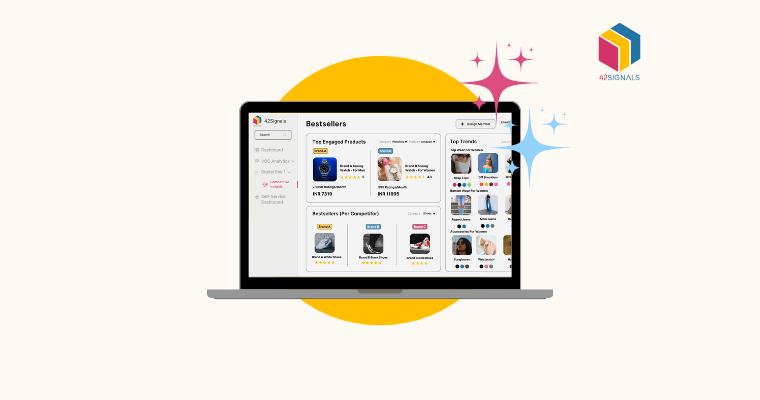Voice of Customer Analytics, In the bustling and fiercely competitive business realm, creating unforgettable customer experiences has evolved into a climactic game-changer. Consider that cozy café you adore, where the barista greets you by name and knows your regular order – stepping in feels like a warm embrace. This embodies the essence of customer experience, extending well beyond a mere cup of coffee.
To truly deliver exceptional customer encounters, businesses must delve into their customers’ preferences, behaviors, and pain points at a granular level. This is precisely where the role of Voice of Customer (VoC) analytics emerges.
Voice of Customer (VoC) analytics is like listening to a million conversations without being intrusive. VoC analytics involves the collection, analysis, and interpretation of customer feedback data to gain insights into customer needs, expectations, and concerns. Through natural language processing, machine learning, and sentiment analysis, it extracts valuable insights from large amounts of structured and unstructured customer data.
In this article, we’ll delve into how VoC analytics can transform customer perceptions of a company and explore its significance for businesses striving to outperform their competitors.
Revolutionizing Customer Experience:
Traditionally, businesses have relied on surveys, focus groups, and customer service interactions to hear what customers think. But these ways often didn’t give the full picture, provided limited insights, and failed to capture the complexity and diversity of customer opinions. VoC analytics does things differently – it enables organizations to listen to their customers continuously and at scale.
Here are some ways in which VoC analytics can revolutionize customer experience:
Personalization:
VoC analytics helps companies group their customers depending on what they like, how they act, and what they say. This way, businesses can make experiences that fit each person’s wants, leading to increased customer satisfaction and loyalty. For example, imagine a beauty brand leveraging VoC analytics to pinpoint loyal customers who regularly purchase a specific skincare product. By recognizing this pattern, the brand can send personalized notifications offering exclusive discounts or early access to new arrivals, enhancing the customer’s engagement and strengthening their affinity for the brand.
Proactive Problem Resolution:
Voice of Customer Analytics empowers businesses to detect and address customer issues promptly, reducing churn and improving overall customer satisfaction. By analyzing customer feedback from various channels, such as social media, review sites, and contact centers, organizations can identify common problems and resolve them proactively. For example, a telecom provider might use VoC analytics to identify network coverage issues in a particular area and send targeted messages to affected customers offering free data credits or discounts.
Improved Product Development:
VoC analytics provides valuable insights into customer needs and preferences, helping businesses design products and services that meet their expectations. By analyzing customer feedback, organizations can help identify feature gaps, usability issues, and areas for improvement, enabling them to create products that resonate with their target audience. For instance, a software company might use VoC analytics to inform the development of a new product version, incorporating customer suggestions and requests to enhance user experience.
Enhanced Customer Engagement:
VoC analytics makes it easier for companies and customers to talk in a way that feels genuine. This helps create trust and strong relationships that last a long time. When businesses listen to what customers have to say and reply in the right way, it shows they really care about making customers happy. This makes customers want to come back again and positive word-of-mouth referrals. For example, a retailer might use VoC analytics to identify customers who express frustration with their shopping experience and offer personalized assistance, such as styling consultation.
Benefits of VoC Analytics:
Image source: https://khoros.com/
The benefits of VoC analytics extend beyond improved customer experience. Here are some additional advantages of implementing a Voice of Customer Analytics program:
Cost Effective: According to a study by Watermark Consulting, companies that excel at customer experience achieve higher revenues per customer compared to those that lag behind in customer experience. By leveraging VoC analytics, businesses can identify areas for cost reduction while simultaneously improving customer satisfaction, resulting in increased profitability.
Competitive Advantage: In today’s customer-centric marketplace, providing exceptional experiences is no longer sufficient; businesses must exceed customer expectations to stand out from the competition. VoC analytics equips organizations with the insights necessary to anticipate customer needs and deliver unique experiences that differentiate them from rival brands.
Improved Decision-Making: VoC analytics offers a data-driven approach to decision-making, enabling businesses to base their strategies on objective customer feedback rather than assumptions or gut instincts. This results in more effective initiatives and resource allocation, ultimately contributing to organizational success.
Best Practices for Implementing VoC Analytics:
To overcome these challenges and maximize the effectiveness of VoC analytics, organizations should follow best practices, such as:
Defining Clear Objectives: Start by defining clear objectives for VoC analytics, such as improving customer satisfaction, reducing churn, or identifying new product opportunities. This will provide direction for the process of collecting and analyzing data.
Selecting the Right Technology: When picking the tools for VoC analytics, go for the ones that make sense, like NLP, machine learning, and sentiment analysis tools. Look at things like if they can grow with you, how easy they are to use, and if they work well with what you already have.
Building a Cross-Functional Team: Get a team together with different skills – like data experts, salespeople, and customer support folks. They’ll work together to plan, design, execute, and interpret VoC analytics.
Using Multiple Data Sources: To really know what customers think, use lots of different info sources like surveys, reviews, social media, and data from your customer records. This way, you’ll get the full picture of what customers feel. It’s like looking at a puzzle from different angles to see the whole picture.
Continuously Monitoring and Analyzing Feedback: Continuously monitor and analyze customer feedback to identify emerging trends and issues. This will enable organizations to react quickly to customer concerns and improve their overall experience.
Acting on Insights: Finally, act on the insights gained from Voice of Customer Analytics. Use the insights to make tangible improvements to products, services, and customer experiences. Communicate the changes to customers and solicit further feedback to refine and optimize the improvements.
Conclusion:
Voice of the Customer (VoC) analytics is a game-changer when it comes to understanding how customers feel and act. Thanks to AI, machine learning, and natural language processing, businesses can dive into a sea of customer feedback data and uncover valuable patterns and insights that manual efforts might miss.
But, diving into VoC analytics needs a smart approach. It means setting clear goals, picking the right tech, building teams with different skills, using lots of info sources, keeping an eye on feedback all the time, and most importantly, using what you learn to make things better for customers.
Get in touch with us today and embark on a journey to create exceptional customer experiences that drive growth and loyalty. Contact us at sales@42signals.com. Your customers’ voices are waiting to be heard, and we’re here to help you listen and thrive.




